Video SEO: Boost Your Website Traffic with YouTube
In today’s digital age, creating video content has become an essential part of any successful online marketing strategy. However, simply creating high-quality videos is not enough to ensure that your target audience finds your content.
To truly reap the benefits of video marketing, you need to implement effective video SEO.
Whether you’re a seasoned video marketer or just getting started, this guide is designed to equip you with the knowledge and tools you need to optimize your videos for search engines and boost your website traffic with the power of YouTube.
TABLE OF CONTENTS:
Why Is Video Optimization Important?
Marketing experts say that videos increase their sales by up to 78%, which is why it’s vital that they’re optimized for discovery on search engines, too. Optimizing videos for SEO is a great way to boost your video traffic, create a community and help people find your website.
You’d be surprised at how few businesses implement SEO for their video content. HubSpot discovered that 31% of marketers add video to their websites to improve SEO. This technique increases page quality and the time visitors spend on the page.
But with Google indexing millions of videos from websites across the Internet, it’s worth every moment (and penny) spent creating an SEO strategy for your videos.
Optimizing your video’s SEO is important for getting eyes on your video, as well as the content you create on your website, by matching your audience’s search intent. You want to make it as easy for people to find your content as possible.
Dive Deeper:
* Just the Stats: Why Should You Leverage Video Marketing
* 9 SEO Areas to Focus On to Boost Your Video’s Visibility
Implementing a Video SEO Strategy
Before beginning your video SEO strategy, you’ll need to know your audience personas, or discover your businesses target market personas.
Note: Your buyer persona(s) or audience persona(s) is a smaller segment of the broader target audience:

From this, you’ll be able to gather valuable insights like their age, location and job title, as well as other important data like the pain points they have. You should look through Google’s video SEO best practices to help you get an understanding of what you need to optimize before you start creating your content.
Let’s get right into10 quick tips for getting your video SEO optimization strategy ready:
- Search for relevant keywords
- Plan video content that answers the user’s pain points
- Craft content that gives your target audience lots of value by answering their questions
- Create videos that have dedicated website pages (where they are the main feature)
- Upload videos to platforms your target market is likely to be, such as a promotional video on Instagram, a vlog channel on YouTube or a video resume on LinkedIn
- Have one main purpose for each type of video, e.g. brand building, increasing sales or increasing website traffic
- Make video playlists with similar themes or types of videos when uploading to platforms like YouTube
- Create a business biography page on your chosen platform that represents the brand and video content well
- Put together a budget for each video and groups of videos (including SEO)
- Track your video’s progress and keep improving the SEO of your videos
Searching for keywords is easily done on Semrush, Ahrefs, WordStream or even Google Search Suggestions. These tools, as well as your audience personas, can help you find the pain points your audience is looking to solve – and help you craft what your video will be about (hint: the solution to their problem!).
5) Build Pages around Your Videos
In case I haven’t made my point clear enough – we’re living in the video age. That means that people are getting more and more used to watching videos as their primary source of information. What you should take away from this is that videos should be among your top priorities across your whole marketing strategy. In other words, you have to embrace the full power that your video marketing can give you. That includes building the pages of your website and your landing pages around the videos. Make your videos the stars of your content! Put them in the spotlight!
6) Pick One Video and Make It Shine
If you have a nice video catalog for your brand, products and services, you’ll feel tempted to put all of them in the spotlight. I mean, it’s understandable! You want to show the hard work you’ve been doing. This, however, can backfire. I’ll let Google explain: “Create a standalone landing page for each video, where you can gather all its related information.”
How to Optimize Your YouTube Channel
YouTube is the most-used social media platform (82%), and is its own search engine that comes right after Google in popularity:
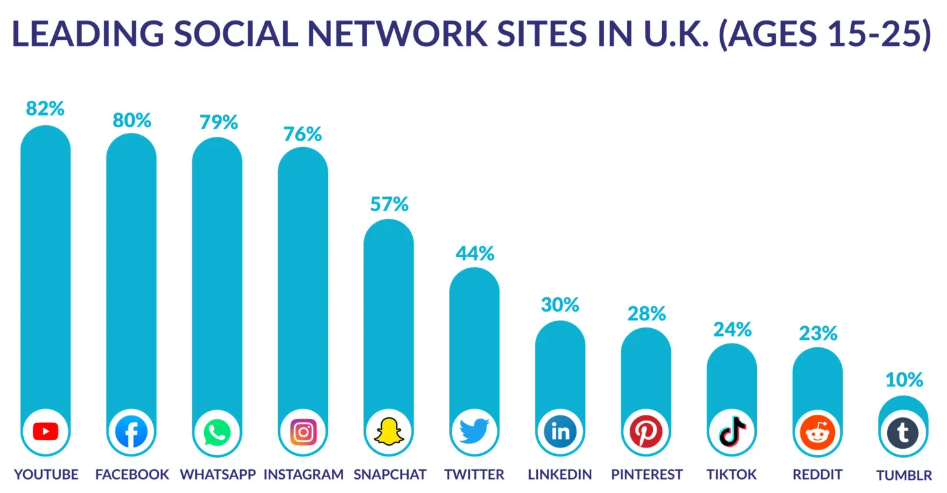
As a platform best known for videos that either teach or entertain, it’s a go-to for many businesses that sell products or services that need some extra explaining.
Although you can optimize your videos for Google, too, if they’re going on YouTube, there are some key YouTube optimizations to make.
Let’s take a look at what you can do to your YouTube videos to help them rank higher.
The Keyword Balancing Act
Depending on which search engine you’re optimizing for, you’ll want to either research keywords via Google or YouTube itself. When scoping out keywords for YouTube, you can simply type them into the platform’s search bar and check the automated responses, as well as what other videos have done:
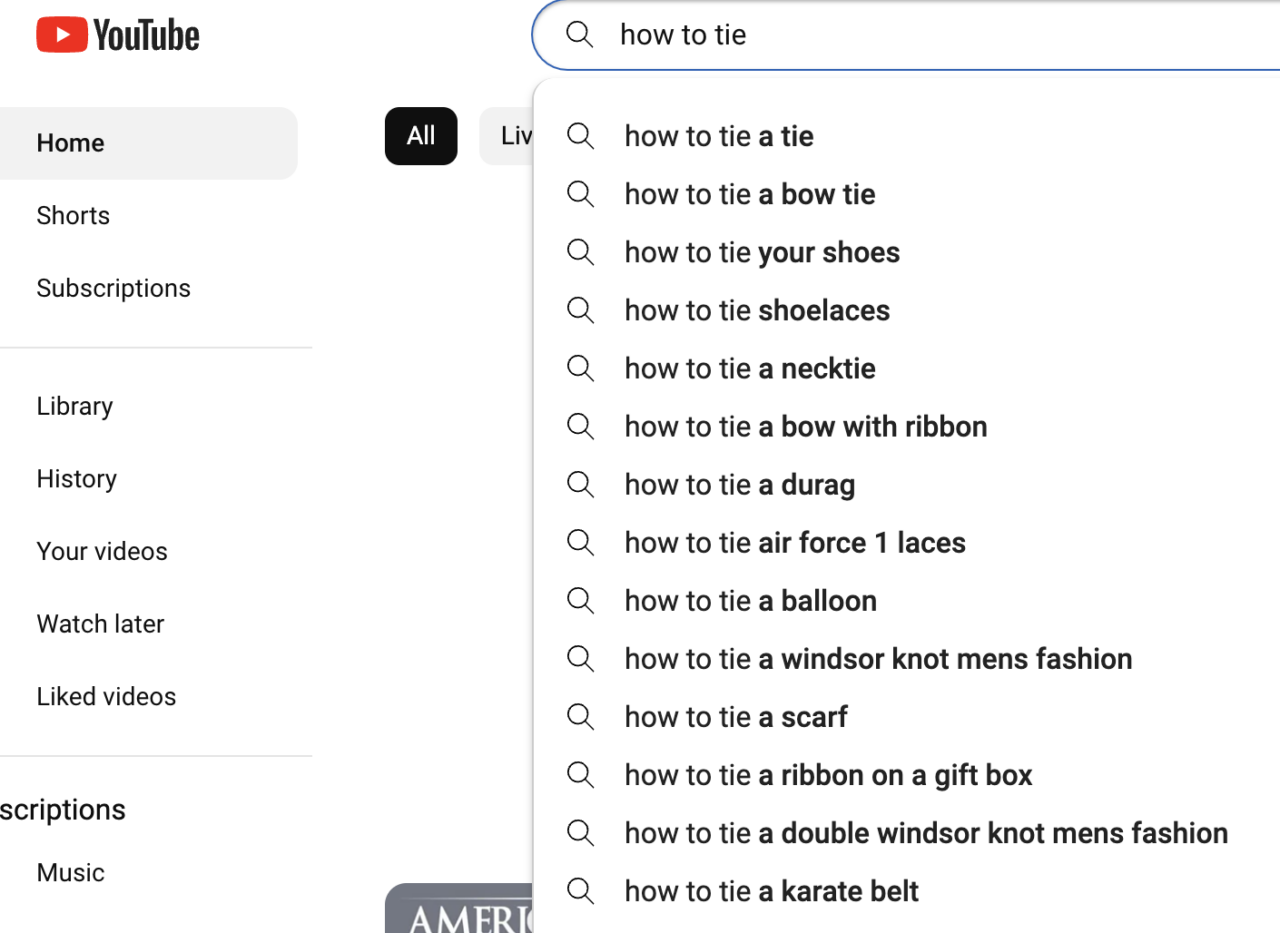
It’s important not to stuff keywords into your video content, titles and descriptions. But you do want to include them to help viewers who are searching. That’s the delicate keyword balancing act! I recommend adding the keyword into a few places in your content, such as:
- Title and description
- Your video’s file name
- In the video itself
- The transcript
Dive Deeper: SEO Keyword Research Made Easy in 2023
Titles and Descriptions
YouTube’s titles and descriptions are important to optimize for video SEO. Try to keep the title to 50 characters, so it won’t be shortened in the search results. Make sure to describe what your video is about as succinctly as possible to entice people to view it.
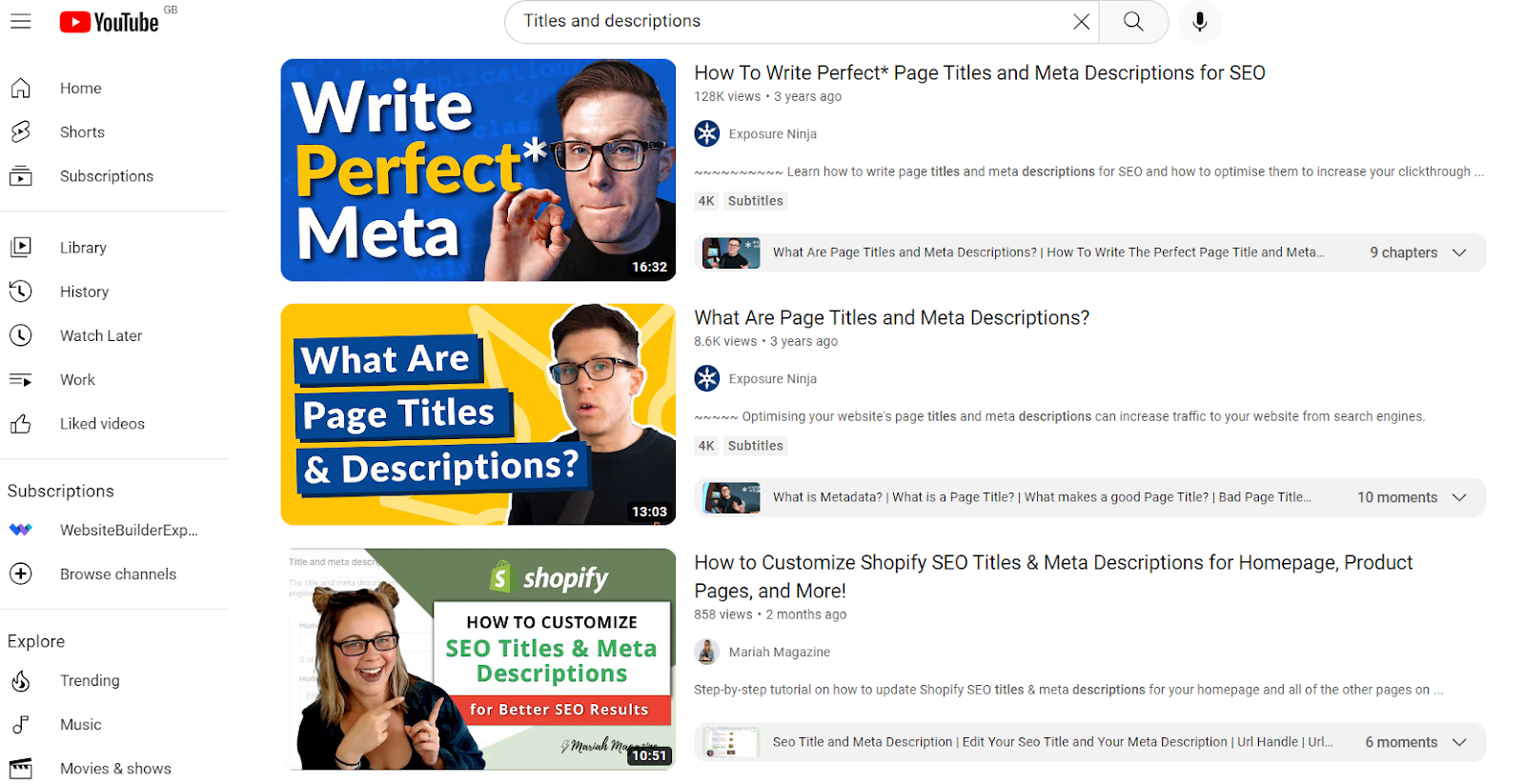
As for the descriptions, the first few lines need to describe what your video is about, too, as that will appear under the title. Make the first 100 characters really count! Including a description also means the algorithm has more of a chance to crawl the video.
Which leads us to creating transcripts….
Dive Deeper: How to Write a Strong SEO Title Tag (with Formulas & Templates!)
Creating Transcripts for Videos
Creating transcripts for video SEO optimization allows your video to be more useful for users.
More importantly, transcripts add more text for bots to understand the video content.
This is a great opportunity to rank for the terms that you’re optimizing for!
A transcript can also help your video show up in Google search results. This is like a little thank you from Google for making it more accessible for audiences who are hard of hearing or watching your video in public.
To transcribe your video, you can use free YouTube automatic captioning, which is not necessarily accurately transcribed, but is a good free option. Otherwise, you can hire a transcriptionist who specializes in transcribing, but this usually comes at a high cost.
Another great video SEO technique is captions:
- Video captions make your video more engaging, with 91% of captioned videos being watched all the way through to the end.
- Plus, 80% of people are more likely to watch the whole video if it includes captions.
Encouraging Engagement
“Smash that subscribe button!” is not the only way to encourage engagement. YouTube’s algorithm really favors videos that keep people engaged – which means watching until the end, interacting with the comments, or liking and sharing the video.
At least, that’s how the YouTube algorithm began. For 2023 and beyond, YouTube is trying to raise authoritative content, so they’re looking at ways that people can get good-quality information from authoritative sources, as this raises viewers’ satisfaction.
So how do we ramp up satisfaction and engagement? Here’s a few tips:
- Skip the lengthy introduction of who you are and get right to what you can offer your viewer
- Use graphics and slightly quicker edits to keep the eye occupied
- Bring a high energy and positive language to your content
- Build the relevant information into a climax where the viewer gets everything they need
- Cut out segments of the video that include “ums” and pauses that feel too long
Dive Deeper:
* 18 Engaging Video Content Types that People Love to Watch
* The Types of Videos to Use at Each Stage of the Marketing Funnel
* Why Marketing Videos on Your Homepage May Not Be Wise
The Magic of Thumbnails
Okay, so magic is an overstatement, but it’s been noted that on 70% of the most popular videos, the thumbnails have titles or explanatory text on them. That shows that those who create thumbnails for their videos are more likely to reach the masses.
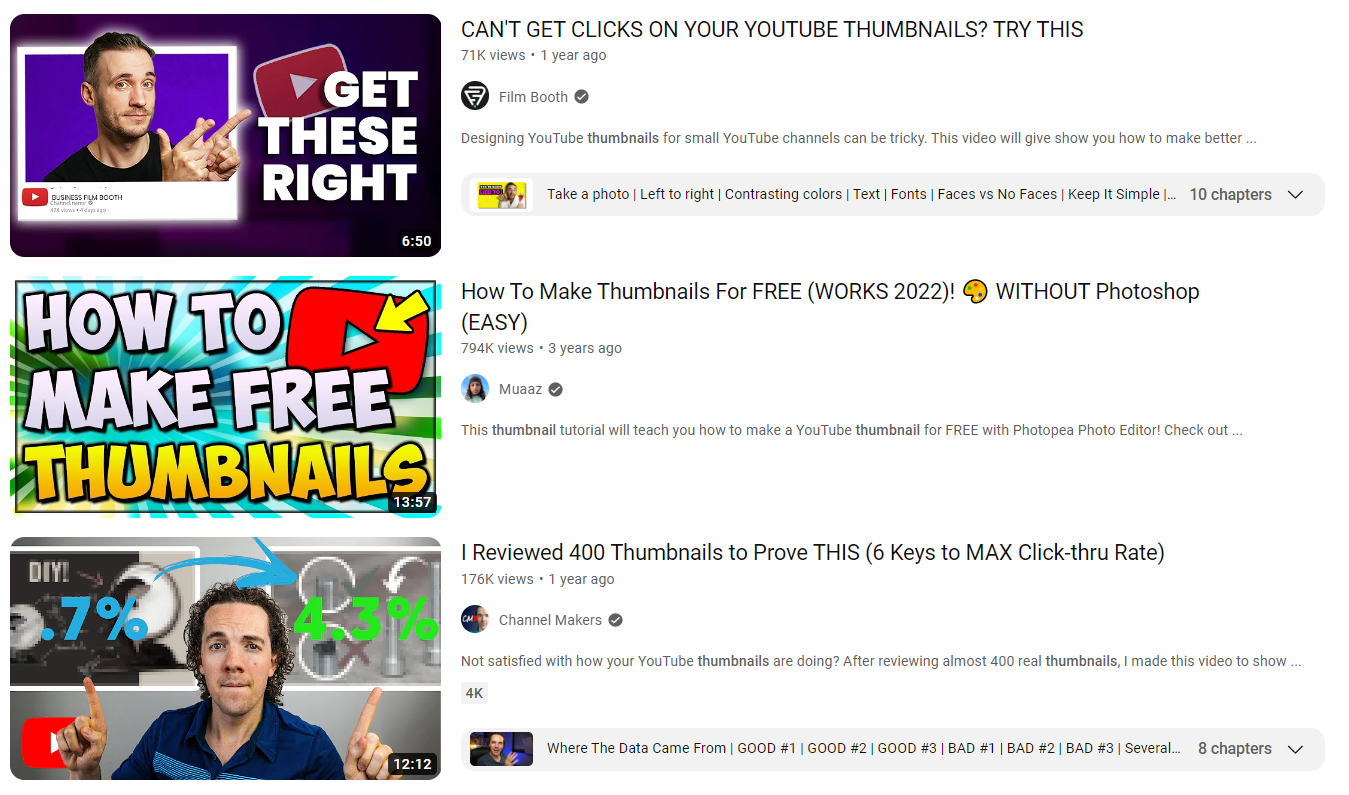
Some top tips for your thumbnail:
- Keep it to 1280 x 720 px size
- Top formats for Google SEO are BMP, GIF, JPEG, PNG, WebP, and SVG
- Include a face if it makes sense to your content
- Add extra text that points to a benefit for viewers to watch your video
- Use colors that will capture attention
- Create consistency in the design of your thumbnails that make them instantly recognizable as being your content
Know Your Algorithm
How YouTube’s algorithm suggests content for users is a two-pronged approach:
- candidate generation
- ranking
What that means is the algorithm takes a user’s watch history and it suggests videos in a similar category, video ID or demographics. Then the algorithm has its own ranking system for videos based on how similar viewers interacted with it and will suggest it if it ranked well.
Why is this important to video SEO optimization? Well, YouTube is trying to get the right content to the right demographics, and also suggesting the highest-ranked videos. That means if you create content for a particular “group” of people and make it the best quality for them while offering them more content to watch, you’ll likely get recommended.
Dive Deeper: 7 Tips to Improve Your Social Media Videos in 2023
Time Is an SEO Factor
The more time viewers spend watching your content, the better! Ways to keep viewers engaged in your content include:
- Adding video suggestions at the end of your video
- Creating playlists of similar content
- Asking people to subscribe to your channel
As it stands, you need 4,000 hours of watch time to monetize your channel. You can also have a range of short-form and longer-form content to help increase watch hours so you can start monetizing your YouTube channel videos. Plus it’s another algorithm signal that your content is good!
The More Technical Stuff
Adding keywords to meta titles and descriptions and describing your video in structured data signals to Google what relevant queries your video helps with. Just make sure that you’re accurately describing what your content is about, because if viewers watch the video but you don’t answer their query, they might stop watching and that will affect your ranking.
Every video should have unique structured data.
Structured data helps Google better understand the content of your video by providing specific information about the video, such as its title, description, thumbnail URL, upload date, duration, content URL, embed URL and the topics covered. This data is presented in a format that search engines can easily read and interpret, making it easier for them to determine the relevance of your video to specific search queries.
This structured data is written in JSON-LD format, which is a format that search engines can easily read and interpret. By including this structured data in the code of your webpage:
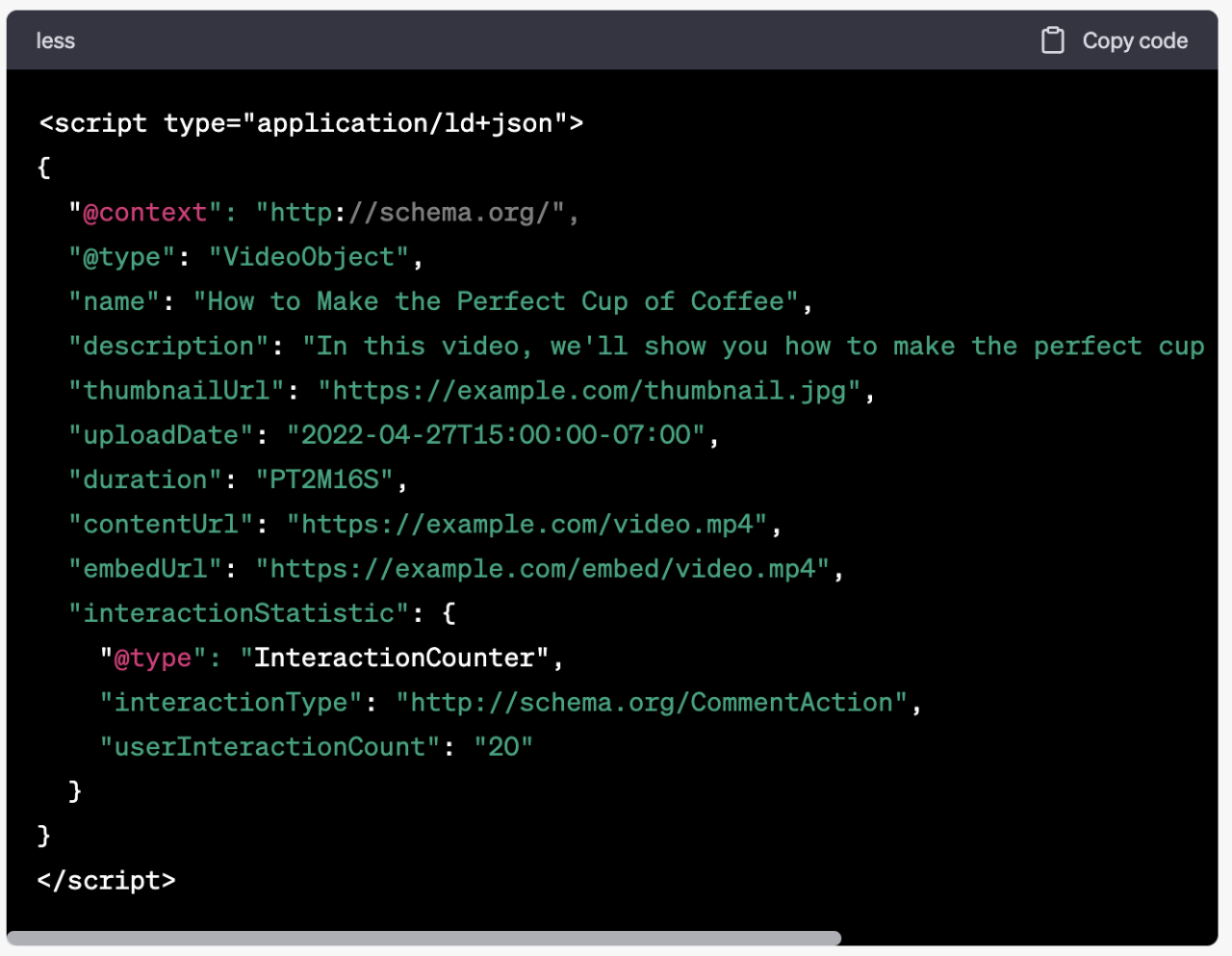
Read more from Google on how to add structured data to your videos.
If you have ten videos with the exact same content repeated, that will confuse the algorithm and they’ll likely flag it.
Your video will rank well for SEO if you embed it from YouTube onto your website.
You can do this by clicking the “Share” button on the YouTube video or playlist and then the “Embed” button will give you the code you can copy and paste onto your site.
Dive Deeper: 20 Pre-Production Tips to Create Successful Video Content in 2023
Video SEO Checklist
Here are some extra points on what you can do for SEO optimization of your videos:
- Daily Uploads Myth: You do not need to upload daily or even weekly to gain an audience, just keep it consistent
- Live Times: For live videos, check your analytics to see when your audience is most active
- Content: Create informative and high-value content and stick to topics within your niche or market
- Best Upload Method: Post videos on YouTube and embed them into your website
- Pimp Your Results Page: Make video thumbnails and titles that encourage people to watch
- Become an Authority: Build your portfolio of videos to become authoritative in your topic
- Build Dedicated Video Landing Pages: Make your videos the stars of your content by embedding them on a dedicated landing page to boost conversions by an incredible 80% [NEEDS UPDATE: Undated statistic].
The best part of the algorithm for both Google and YouTube is that it is user focused. So, theoretically, the more you think about your viewer’s experience and design it for their satisfaction – the algorithm will follow suit!
Focus on getting to pain points right away and keep them watching with the promise of having those answered by the end of the video. Even if you’re creating entertainment videos, you can replace pain points with the main attraction of your video.
How Videos Improve Your Website SEO
While there is some debate on whether videos on your website or blog will help improve the page’s SEO, there are also some interesting factors to suggest it does.
For example, 39celcius saw a 22% increase in the average time people spent on the site after they embedded YouTube videos on it:

Also, if your YouTube video appears in the Google video tab results and it’s clicked, it could take visitors to your website rather than the YouTube page – increasing traffic and boosting your SEO efforts! Although, this depends on whether your website page has extra relevant content for the searcher’s query.
It can also improve the amount of backlinks you get. Say a happy viewer links to your video, you could make it a part of your strategy to ask them to add a link to the website that hosts your video instead. Then that will signal to Google that your content is worthy of ranking better.
Lemonlight noted that for organic traffic, video content posts saw an increase of 10% to 250% – which is an astounding SEO boost! They also note that although you can’t control metrics like number of subscribers or likes, if you optimize what you can control, you’ll significantly improve your website SEO.
You may also like: Top 5 YouTube Ad Best Practices that Boost Ad Performance
Final Word on Video SEO
If you take anything away from this article, we hope that it’s that optimizing your video for SEO is all about the viewer. Ensuring that they get the best content they can get, easily, and in a way that entertains them is the best way to go about it.
The other important thing to remember is that with all the written content that goes along with your video, you’re telling viewers (and Google) concisely what your video is about. Think of it like letting the Internet know what they can gain from both ranking and watching your videos. If you stick to focusing on the viewer, the algorithm will follow.
Hopefully you learned how to do video SEO, but if you just want someone to do the work for you, Single Grain’s SEO experts can help!👇





